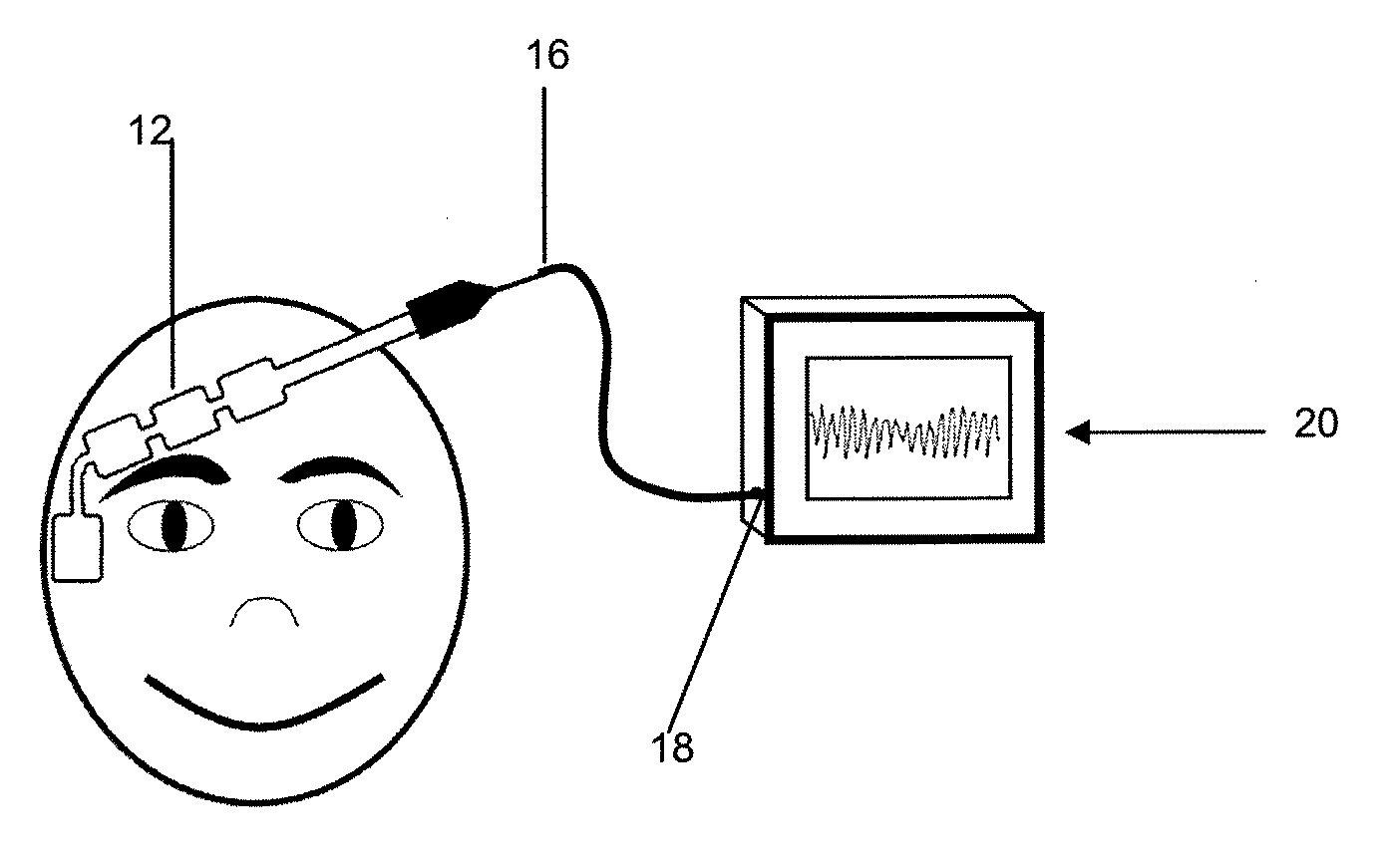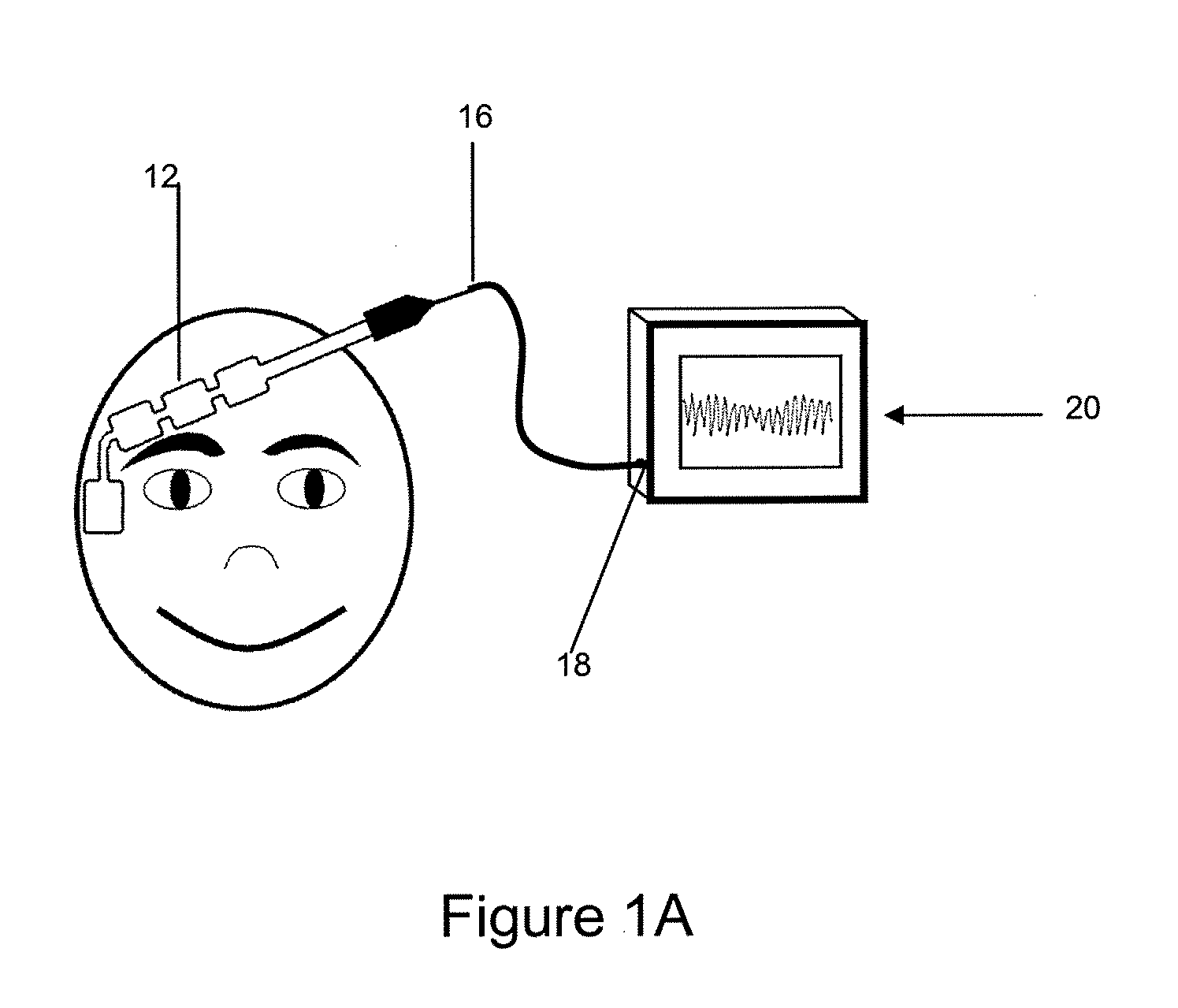Skin preparation device and biopotential sensor
a preparation device and sensor technology, applied in the field of skin preparation devices, can solve the problems of long flexile tines that lack uniform orientation and insertion angle into the skin, limiting the ability unwanted noise in the signal, so as to reduce the overall area of skin affected, reduce the impedance, and the effect of high quality
- Summary
- Abstract
- Description
- Claims
- Application Information
AI Technical Summary
Benefits of technology
Problems solved by technology
Method used
Image
Examples
Embodiment Construction
[0035]A biopotential sensor 12 shown in FIGS. 1A and 1B is a device that contains an array of one or more electrodes 14 and a set of conductors that provide an electrical conduction path for the acquired signals from the electrodes 14 to a single terminating connector 16 which in turn connects to the mating receptacle 18 of the biopotential monitoring system 20. The sensor device 12 may be coupled to the monitoring system via a terminating connector 16 inserted into a mating receptacle 18 on the monitoring system 20. Once electrical connection is achieved, the monitoring system 20 may perform analysis of the acquired biopotential signals.
[0036]The biopotential sensor 12 includes one or more electrodes 14. In the embodiment of the biopotential sensor 12 shown in FIG. 11B, the sensor 12 is comprised of four electrodes 14. In this embodiment, the sensor 12 includes a flexible substrate 22 with an adhesive layer on at least portions of the substrate 22 to enable secure placement on the ...
PUM
 Login to View More
Login to View More Abstract
Description
Claims
Application Information
 Login to View More
Login to View More - R&D
- Intellectual Property
- Life Sciences
- Materials
- Tech Scout
- Unparalleled Data Quality
- Higher Quality Content
- 60% Fewer Hallucinations
Browse by: Latest US Patents, China's latest patents, Technical Efficacy Thesaurus, Application Domain, Technology Topic, Popular Technical Reports.
© 2025 PatSnap. All rights reserved.Legal|Privacy policy|Modern Slavery Act Transparency Statement|Sitemap|About US| Contact US: help@patsnap.com



